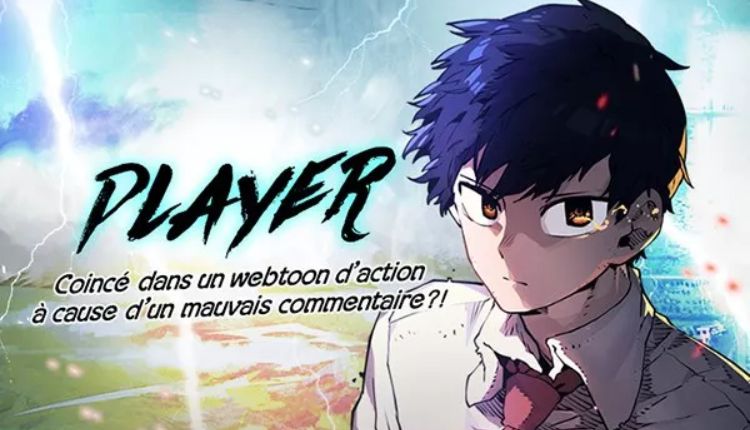Charming readers via a unique blend of gaming mechanics and high-stakes narratives. Originating from the aggregate of “Player Manwa”—commonly referencing characters with sport-like progression—and “manhwa”, the Korean time period for comics, this genre transports readers into testimonies that simulate MMORPGs, dungeons, quests, and leveling structures. These comics regularly mirror the structure of video games whilst embedding deeply emotional storylines, making them impossible to resist for enthusiasts of fables, movement, and psychological thrillers.
The Concept Behind Player Manwa
At its core, player manhwa explores worlds in which characters function under strict gaming rules. The protagonist, often referred to as a “Player Manwa,” gains enjoy points (EXP), acquires objects, completes quests, and levels up. Unlike traditional manhwa, those memories follow mechanics seen in RPGs.
The settings can also consist of dungeons, towers, or post-apocalyptic worlds in which survival depends on tactical decisions and enhancements. What makes this style particular is its potential to mimic the enjoyment of gambling in a video game at the same time as handing over a gripping narrative.
Popular Tropes in Player Manwa
A variety of routine issues and tropes outline player manhwa. One of the most widespread is the “Player Manwa” trope, where a protagonist is sent back in time after loss of life in a catastrophic event. Armed with expertise in destiny activities, the character uses their 2d hazard to prepare more efficiently.
Another popular topic is the “solo participant”, who progresses without a celebration, often due to betrayal or specific capabilities. The inclusion of famous windows, ability timber, item inventories, and boss battles is all quintessential features that resonate with enthusiasts of function-gambling games.
Notable Player Manhwa Titles
A few standout collections have helped shape and popularize this genre. “Solo Leveling,” possibly the most iconic, follows Sung Jin-Woo, a weak hunter who gains the capability to level up infinitely.
His journey from the weakest to the most powerful player is filled with intense battles, evolving skill sets, and an ever-deepening thriller. Another instance is “The Beginning After The End”, which blends reincarnation, magic, and RPG factors. Titles like “Omniscient Reader’s Viewpoint” and “The Gamer” also explore meta-narratives and actual-world blending with recreation mechanics, keeping readers on the edge of their seats.
The Appeal of Player Manhwa
The attraction of player manhwa lies in its fusion of myth, escapism, and logical progression. Readers are drawn to the gratifying structure of levelling up, finishing missions, and gaining new competencies. For fans of gaming, the genre gives a feel of familiarity with the delivered intensity of man or woman improvement and world-constructing. Furthermore, the unpredictable nature of the plots, blended with beautiful visuals, makes the analysis enjoyable, immersive, and addictive.
Art and Visual Storytelling in Player Manwa
One of the defining strengths of Player Manwa is its artwork. Vivid, precise panels carry otherworldly monsters, epic battles, and futuristic tech into existence. Artists regularly use colour schemes that mirror online game aesthetics—deep blues, glowing purples, fiery reds—to bring temper and chance stages. The integration of UI-like elements, which include fitness bars and device indicators, adds a layer of immersion that is both visually engaging and narratively functional.
Character Development and Emotional Depth
While participant manhwa are frequently praised for their motion and gadget mechanics, additionally, they also excel in portraying personal boom. Protagonists generally begin at rock bottom—physically weak, mentally strained, or socially isolated.
As they progress, not only do their powers increase, but also so does their understanding of their global values and relationships. The genre no longer pulls away from exploring trauma, loss, and sacrifice, regularly using those elements to humanise characters and make their trips extra compelling.
Evolution of the Genre
Initially considered a gap, participant Player Manwa has advanced into a primary subgenre, influencing not only other manhwa but also adaptations in other media. The achievement of titles like “Solo Levelling” has led to anime adaptations, mobile video games, and light novels. This move-media enlargement demonstrates the developing call for interactive, recreation-like storytelling that engages audiences beyond the comic page. New titles continue to push the bounds by incorporating horror, sci-fi, and philosophical subject matter into traditional RPG codes.
Cultural Impact and Global Reach
Player manhwa is no longer restricted to South Korean audiences. Thanks to structures like Webtoon, Tapas, and Tappytoon, English-speaking readers can get access to first-rate translations of these works. The global popularity of the genre displays a shared cultural interest in gaming, method, and hero’s adventure storytelling. It also highlights the developing impact of Korean popular culture within the worldwide media panorama, along with K-pop, K-dramas, and Korean cinema.
Challenges Within the Genre
Despite its recognition, participant manhwa faces challenges. Critics often point to formulaic plots, overpowered protagonists, and repetitive settings. To preserve reader engagement, creators need to balance familiarity with innovation, continuously freshen their tale mechanics and man or woman arcs. There is also stress to preserve lengthy-jogging series without sacrificing niceness, as fan expectations rise with each chapter.
Future of Player Manhwa
The destiny of player manhwa seems vivid as new authors and artists input the scene with fresh perspectives. Hybrid testimonies that merge genres—combining romance, slice-of-life, and mental mystery with RPG mechanics—are gaining traction. As the era advances, we may additionally even see interactive manhwa formats in which readers can have an impact on story results. The style’s adaptability and visual dynamism ensure its place within the evolving landscape of virtual comics.
Conclusion
Player manhwa has effectively carved out a completely unique area of interest by combining the fun of gaming with the emotional depth of storytelling. With immersive worlds, rich character development, and speedy-paced movement, it offers readers a multidimensional experience that traditional comics or video games on my own can not provide. As the genre keeps to amplify and innovate, it’s clear that participant manhwa isn’t always only a trend but a transformative pressure in international entertainment. Whether you’re a gamer, a fable lover, or a comic fanatic, the world of player manhwa invites you to press start and dive into the journey.

